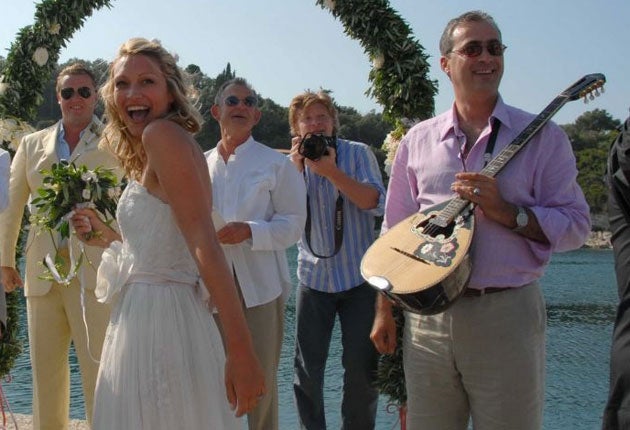Brides ditch something new for something nearly new
Demand for second-hand dresses and rings has soared this year

Your support helps us to tell the story
From reproductive rights to climate change to Big Tech, The Independent is on the ground when the story is developing. Whether it's investigating the financials of Elon Musk's pro-Trump PAC or producing our latest documentary, 'The A Word', which shines a light on the American women fighting for reproductive rights, we know how important it is to parse out the facts from the messaging.
At such a critical moment in US history, we need reporters on the ground. Your donation allows us to keep sending journalists to speak to both sides of the story.
The Independent is trusted by Americans across the entire political spectrum. And unlike many other quality news outlets, we choose not to lock Americans out of our reporting and analysis with paywalls. We believe quality journalism should be available to everyone, paid for by those who can afford it.
Your support makes all the difference.Superstitious brides have followed the mantra "something old, something new, something borrowed, something blue" since the Victorian era, but this year, budget-conscious women seem to be turning their back on the "new" entirely and plumping instead for second-hand wedding gowns, antique rings, and even used flowers.
EBay has reported a 60 per cent rise in wedding dress listings over the past three months; second-hand wedding dress websites such as the Dress Market and Almost New are reporting a huge increase in trade; and Oxfam is struggling to cope with the demand for its second-hand gowns.
While the number of British couples tying the knot has declined steadily since 2004 – falling by 1.8 per cent last year to 263,000 – market research group Mintel found that spending on bridal wear in the UK has continued to soar, rising to £128m in 2008. However, the effects of the recession may signal an end to the vogue for lavish weddings, which has been fuelled by the over-the-top nuptials of celebrities splashed across the pages OK! magazine.
"People are more discerning about how they spend their money now. They are saying: 'How much will it cost me? Is there another, cheaper way?'," said Sam Riley, director of Wedding Matters wedding planners. "Before, when cash was flush, they could afford not to worry about that."
A 2008 survey by Brides magazine revealed that the cost of the average UK wedding has risen to £22,858. Little wonder, perhaps, that some brides are keen to recoup some of the cost of the big day by selling their wedding dress after the event.
"If you get a very practical bride, she may well be willing to compromise on her dress, buy it cheaply online and then have it altered to fit. For other brides it is a very precious thing, and she will box it and keep it for ever," said Ms Riley.
Cash-strapped couples are also disregarding the tradition that an engagement ring should cost between one and three months' salary (depending on whom you listen to), and opting for second-hands rings, which can offer much better value.
"Generally business is pretty dire in jewellery at the moment, but antique rings have held up better," said Alexander Hirschfeld, director of Hirschfelds in London's Hatton Garden.
There has been a 200 per cent increase in the number of engagement rings on eBay in the past three months, with an average price of just £31.
Bond Street jewellers AG Antiques has reported a 20 per cent increase in customers shopping for antique rings in the past six months, while bespoke jewellers Aurum and Perry Nazari both noted a 15 per cent rise.
"An antique piece is always going to be more sought after," said Mr Hirschfeld. "A diamond solitaire can be produced in the hundreds, but an antique ring is a one-off. It has a history that can't be replicated."
Some brides are trying to cut costs even further – by using second-hand flowers at the wedding service.
"If there are two weddings on the same day they often share flowers. Sometimes they don't want to do it, because of their colour schemes, but now they are often willing to compromise," said Claire Seaton of St Bride's Church in London.
Vintage verdict: 'I liked the fact it was unique'
Lucy Besant, 30, a restaurant manager from London, wore a second-hand dress for her wedding in 2006. "I liked the fact that it was unique. It was second-hand but I had it altered and tailored to fit me. The dress is from the 1950s, and I thought that the shape was beautiful, and that it suited me. Two or three of my friends have been to the same shop and liked the dresses there, but with second-hand gowns it is a matter of chance. You don't know what the shops will have in at the time. The Vintage Wedding Dress Company was the first place that I went to and I fell in love with the dress. That was it. We were getting married in Greece so I didn't want to go down the traditional meringue route."
Join our commenting forum
Join thought-provoking conversations, follow other Independent readers and see their replies
Comments